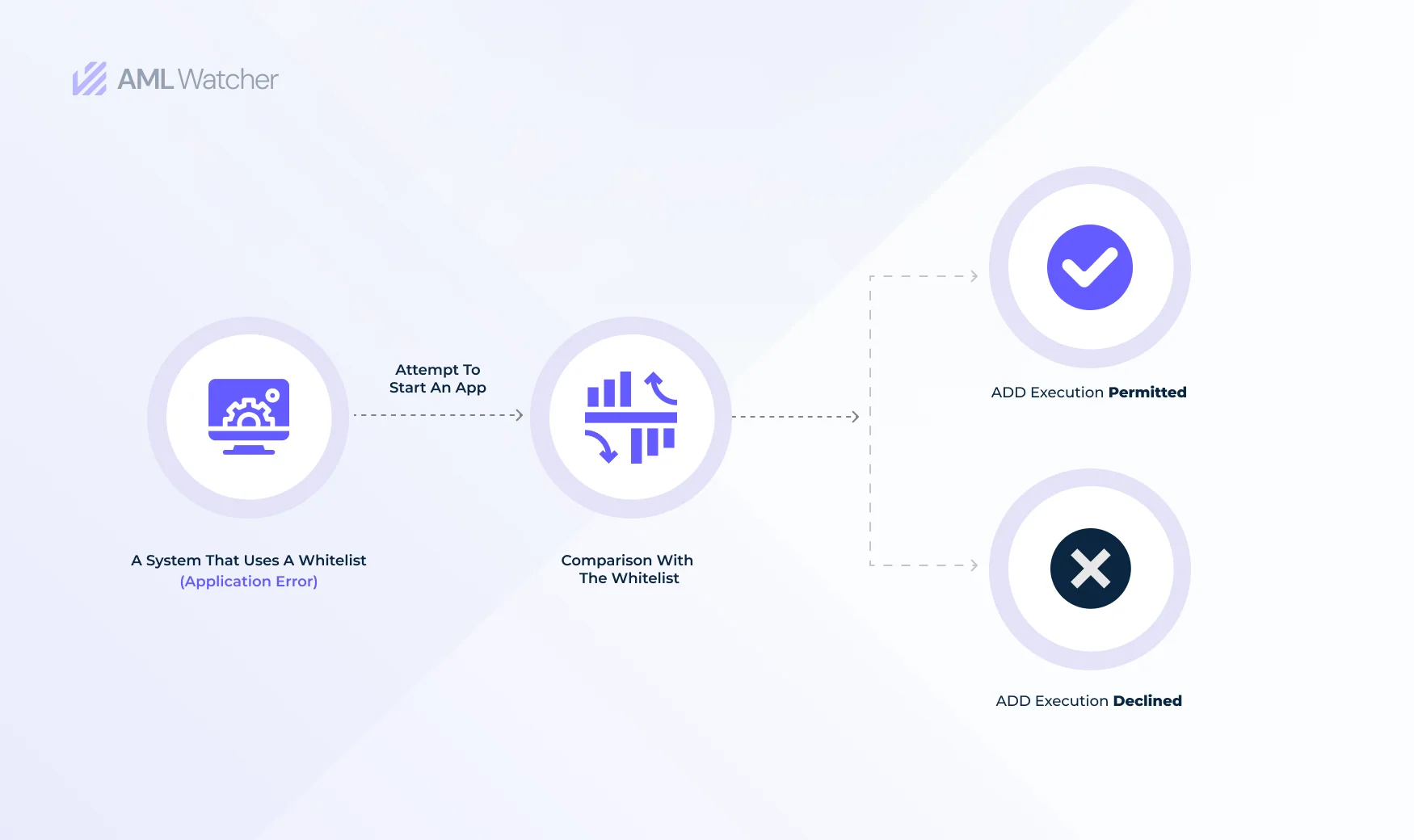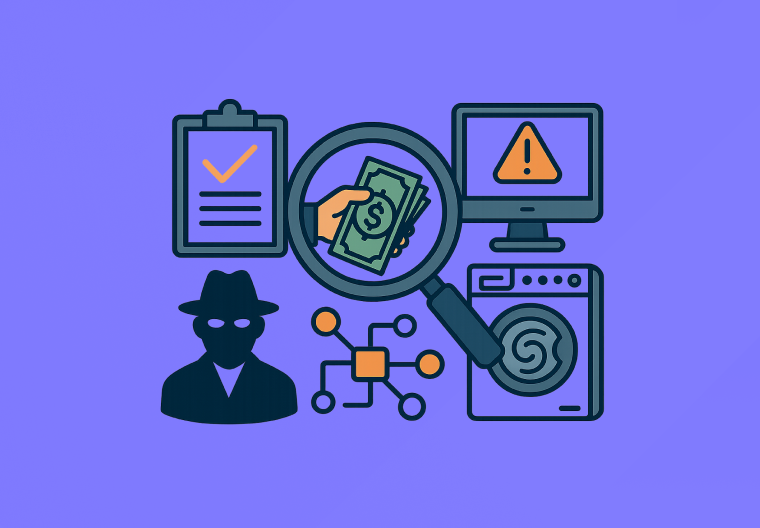
Navigating AML Compliance: A Guide to Custom Whitelisting and Blacklisting
A crucial part of accomplishing AML compliance is access control, which is supported by custom whitelisting and custom blacklisting. By ensuring that only reputable organizations have access to sensitive financial data, these techniques minimize risks, improve cybersecurity, and protect the integrity of the financial sector. This blog will discuss the importance of AML compliance and the crucial role of access control, specifically: Custom Whitelisting and Custom Blacklisting.
Custom Whitelisting in AML
Custom whitelisting in AML (Anti-Money Laundering) Compliance refers to the practice of creating a list of entities or individuals as “verified” or “trusted” that are exempt from certain scrutiny or monitoring processes because they have been thoroughly verified and deemed low-risk for money laundering or other financial crimes. This is typically done after a thorough due diligence process to ensure they pose minimal risk of involvement in financial crimes. The purpose of custom whitelisting is to reduce false positives and streamline the compliance process. By focusing on higher-risk entities and minimizing unnecessary checks on trusted parties, financial institutions can allocate their resources more efficiently.
What is the Primary Objective of Custom Whitelisting?
The primary objective is to pinpoint potential threats or suspicious behavior among various normal transactions. It is like having a security guard who pays extra attention to known troublemakers at a party while letting everyone else enjoy themselves. This way, custom whitelisting helps businesses identify and address AML risks promptly, safeguarding their financial systems and reputation.

Example of Real-world Stories in AML Custom Whitelisting
Imagine you run a bank, and you have thousands of customers. You can’t watch everyone all the time, so you use whitelist. You make a list of your trusted customers, like Mary, Bob, and Joe. If any of them do something unusual with their money, your system will raise a flag, and you can check it out. It’s like having your own security team, but for your bank! This is where custom whitelisting helps banks and businesses spot problems early and stop bad guys from using their services for shady stuff. It’s a super important tool to keep your money safe.
What is Custom Blacklisting in AML?
Custom Blacklisting in Anti-Money Laundering (AML) refers to the practice of identifying and listing specific individuals that are considered high risk or suspicious due to their involvement in illegal activities, potential money laundering, terrorism financing, or other financial crimes. Unlike generic blacklists maintained by regulatory authorities, custom blacklists are created and managed by individual organizations to tailor their AML compliance efforts to their specific needs and risk profiles.
Effectively Blocking Known Threats and Enhancing AML Security
By blocking known threats through custom blacklisting, organizations can proactively protect themselves from becoming unwitting accomplices in money laundering or other financial crimes. This is especially important in industries susceptible to such risks, like financial services.
Real-life Examples of Custom Blacklisting Preventing Data Breaches.
Custom blacklisting – a feature used to block transactions is known to handle suspicious individuals or entities with great precision. For instance, if a marked financial fraudster attempts to transfer funds or make a withdrawal, the custom blacklist immediately flags an alert and blocks the transaction to proceed.
Another example of this includes online retailers. If a customer’s payment information matches a blacklist entry of stolen credit card details being used to pay, the transaction is prevented to control data breaches.
Understanding the Role of Custom Blacklisting to Deal with Dynamic Threats
Custom blacklisting is a proactive methodology that helps organizations stay ahead of emerging crimes in the domain of corruption and money laundering. Adopt these strategies to comply better.
- Enable real-time updates for threats that are meant to emerge as signals change, they can rapidly adapt to emerging threats.
- Organizations can adjust their blacklisting criteria for individuals and organizations based on the latest threat information to date. This may include, for instance, new IP addresses.
- Don’t over-rely on real-time alerts alone, instead look for variations from normal behavior such as transaction rates.
- Integrate with intuitive threat feeds, providing real-time information and helping organizations stay ahead of sophisticated and emerging threats.
Important Factors to Implement for Custom Blacklisting in AML
Implementing blacklisting isn’t enough, instead making sure it has respective features and technology to facilitate efficiency and accuracy is also a crucial aspect of precise AML Screening.
- Gather threat intelligence sources relevant to your business and risk profile to assess risk by enabling access to threat sources.
- Regularly update your custom blacklist by adding new threats and removing outdated content to ensure updated threat-related data.
- Integrate a custom blacklisting solution to align with your organization’s risk threshold and manage a high volume of data in seconds without any performance hindrances.
- Keep following up with the effectiveness of your custom blacklisting by keeping a record of the accuracy percentage to credibly flag a user as high-risk.
- Manage complete record of blacklisting with a centralized database and regular audit trail monitoring, to comply with AML regulations.
- Instead of using third-party solutions for screening, maintain in-house control with on-premise solutions for quick detection of threats.
Possible Innovations and Modern Advancements in Custom Blacklisting
Innovations and advancements in custom blacklisting are not momentary rather it refers to continuous improvement and modification of techniques to comply with the growing demand for intelligent measures of detecting risks.
These innovations include the use of AI/ML algorithms for accurate threat detection, the use of behavioral analysis to identify suspicious patterns, and the use of intuitive power to catch emerging risks.
Choosing the Right Access Control Strategy for AML Comparing Custom Whitelisting and Custom Blacklisting in AML compliance
Custom Whitelisting
|
Custom Blacklisting
|
Certainly! Custom whitelisting and blacklisting in Anti-Money Laundering are critical components of a robust compliance program. If not organized properly, several issues can arise e.g, A disorganized list can result in genuine transactions being flagged i.e. false positives. AML Watcher in this pursuit, aids the financial institutions aiming to achieve strong compliance with custom whitelisting and blacklisting.
Consult us, as we ensure that your strategies remain vigilant and up-to-date against emerging threats.
We are here to consult you
Switch to AML Watcher today and reduce your current AML cost by 50% - no questions asked.
- Find right product and pricing for your business
- Get your current solution provider audit & minimise your changeover risk
- Gain expert insights with quick response time to your queries



